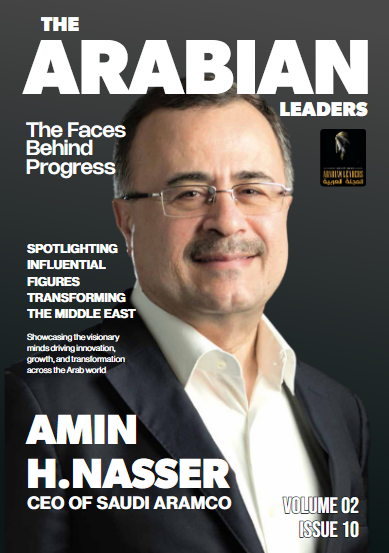The Public Investment Fund (PIF) of Saudi Arabia has emerged as one of the most ambitious sovereign wealth funds in the world. With its sweeping portfolio, audacious mega-projects, and transformation of domestic industries, it represents a cornerstone of the Kingdom’s Vision 2030 plan. But behind this bold forward march lies a more complex terrain—a landscape riddled with global volatility, shifting political tides, and structural economic risks.
PIF’s strength lies in its fearless ambition. But that very same ambition—executing billion-dollar projects across multiple high-risk sectors and geographies—requires navigating a series of formidable external and internal threats. These include geopolitical instability, oil price fluctuations, environmental mandates, interest rate shifts, and questions of governance and execution capability.
As the fund looks to scale from over $700 billion in assets to its $1 trillion target by 2030, understanding the risks becomes as important as celebrating the wins.
The Oil Dependency Dilemma
At the heart of Saudi Arabia’s economy—and by extension, PIF’s capital base—is oil. Although Vision 2030 is predicated on diversifying away from fossil fuels, the truth remains that a significant portion of PIF’s funding still comes from hydrocarbon revenues and transfers from state-owned oil giant Aramco.
Oil dependency presents several interconnected risks:
- Price volatility: Oil prices are famously cyclical. While PIF benefited from higher oil prices in the early 2020s, any future downturn could constrain government revenues and slow capital inflows to PIF.
- Demand decline: As the world accelerates toward green energy, long-term demand for oil may plateau or decline, challenging the sustainability of oil-backed investments.
- Perception risks: Many Western institutions are increasingly reluctant to associate with oil-backed capital, which can limit global partnerships.
In short, while PIF is attempting to transition the Kingdom beyond oil, its runway still relies heavily on the very resource it seeks to transcend.
Geopolitical Tensions and Diplomatic Navigation
As a high-profile arm of the Saudi state, PIF does not operate in a political vacuum. It is tightly tethered to the Kingdom’s image, ambitions, and international standing. This can complicate investments and partnerships, particularly in the West.
Notable geopolitical risks include:
- U.S.–China rivalry: PIF invests in both the U.S. and China. Rising tensions between these powers could force difficult strategic decisions or complicate cross-border operations.
- Regional instability: Middle Eastern geopolitics remains volatile. Any flare-up, whether in Yemen, Iran, or elsewhere, could dampen investor confidence or disrupt domestic projects.
- Regulatory headwinds: Western countries are increasingly scrutinizing foreign sovereign wealth involvement in strategic sectors like tech, energy, and defense. PIF may face tighter regulations or public backlash.
Navigating these risks requires a deft balance between strategic neutrality and diplomatic assertiveness, both of which are hard to maintain in a turbulent geopolitical environment.
Climate Change and Sustainability Imperatives
The global shift toward sustainability is no longer aspirational—it is structural. For PIF, this presents both opportunities and existential challenges.
Risks include:
- Reputational risk: As a fund rooted in an oil economy, PIF faces skepticism around its sustainability claims. Critics may view its ESG (Environmental, Social, Governance) narrative as insufficient or contradictory.
- Transition risk: Global markets are rapidly penalizing carbon-intensive industries. PIF must manage the phase-out of legacy investments while ramping up green portfolios, such as hydrogen, solar, and EVs.
- Capital access: As ESG benchmarks tighten, failure to align with global climate standards may limit PIF’s access to institutional capital and preferred financing terms.
To its credit, PIF has made visible moves—such as investing in ACWA Power, Lucid Motors, and Red Sea Global—to embrace green energy and sustainable tourism. However, the speed of global change may still outpace the fund’s current trajectory unless environmental priorities are accelerated.
Execution Risk: Managing Complexity at Scale
From NEOM and THE LINE to Qiddiya and ROSHN, PIF is overseeing a portfolio of mega-projects on a scale rarely seen in modern investment history. But grand ambition also brings a massive execution burden.
Operational risks include:
- Construction delays: Building futuristic cities and infrastructure at breakneck speed is logistically challenging. Any delays can lead to ballooning costs, public criticism, and strategic stagnation.
- Talent gaps: Many of these projects require world-class expertise in architecture, engineering, AI, and hospitality. While Saudi Arabia is working to attract global talent, workforce shortages and skills mismatches remain real concerns.
- Regulatory and zoning hurdles: Not all mega-projects fit easily into existing legal and land frameworks. Adjusting regulatory mechanisms in real time creates friction and ambiguity.
PIF must not only invest, but also project-manage, scale, localize talent, mitigate risk, and deliver results—a monumental challenge for any sovereign institution.
Global Economic Volatility
Like any investor, PIF is vulnerable to macroeconomic swings that can impact asset values, project costs, and capital access.
Key concerns include:
- Interest rate increases: Global monetary tightening can raise the cost of borrowing and make riskier investments less attractive.
- Currency fluctuations: With large holdings across North America, Europe, and Asia, PIF’s portfolio is exposed to FX volatility that can erode returns.
- Inflation: Supply chain disruptions and inflationary pressures can drive up the cost of materials, labor, and operations—particularly in construction-heavy sectors like tourism and real estate.
While PIF has a long-term horizon, short-term volatility still matters—particularly when it affects liquidity, market confidence, or asset valuations.
Transparency, Governance, and Global Perception
Another area of rising scrutiny is governance and transparency. Global investors, regulators, and watchdogs increasingly demand clear reporting, ESG alignment, and separation between political objectives and financial performance.
Challenges include:
- Limited public disclosure: Compared to peers like Norway’s NBIM or Singapore’s Temasek, PIF’s portfolio details, performance data, and decision-making processes are less transparent.
- Potential political interference: While visionary leadership has helped fuel PIF’s rise, excessive centralization can hinder agility, diversity of thought, or independent governance.
- Global partnerships: Western partners may demand higher levels of disclosure and alignment with best practices before committing to joint ventures.
To overcome this, PIF has already taken steps to professionalize its operations, attract top talent, and establish internal checks—but full alignment with global standards is still a work in progress.
Reputation Management in a Media-Driven World
In the age of digital narratives and viral stories, perception often becomes reality. For PIF, whose brand is tied closely to Saudi Arabia’s reform narrative, maintaining a positive image is both a strategic asset and a persistent challenge.
Media risks include:
- Negative press coverage around human rights or policy shifts
- Skepticism around the feasibility of mega-projects like THE LINE
- Misinterpretation of international investments as “sportswashing” or soft power plays
PIF’s communication strategy must go beyond PR. It must embrace proactive storytelling, transparent impact reporting, and stakeholder engagement, especially in Europe and North America where public sentiment can influence policy.
In Conclusion: Strength in Strategy, Fragility in Scale
PIF stands at the intersection of vision and volatility.
It is arguably the most transformative sovereign fund operating today, yet that transformation comes with risks unmatched by its more conservative peers. PIF is not just navigating capital markets; it is reconstructing a national economy in real time, across multiple industries, amid an era of unprecedented global uncertainty.
The fund’s success will ultimately rest not only on its size or ambition, but on its ability to absorb shocks, learn from missteps, and remain agile in the face of external disruption.
It must also balance multiple identities:
- As a financial steward
- As a national change agent
- As a global investor
- As a diplomatic bridge
Each identity comes with its own vulnerabilities. But if PIF can continue evolving its governance, strengthening its risk management, and adapting to global realities—while staying rooted in Vision 2030—it has the potential to become not only a symbol of Saudi Arabia’s rise, but a case study in the future of sovereign capitalism.








